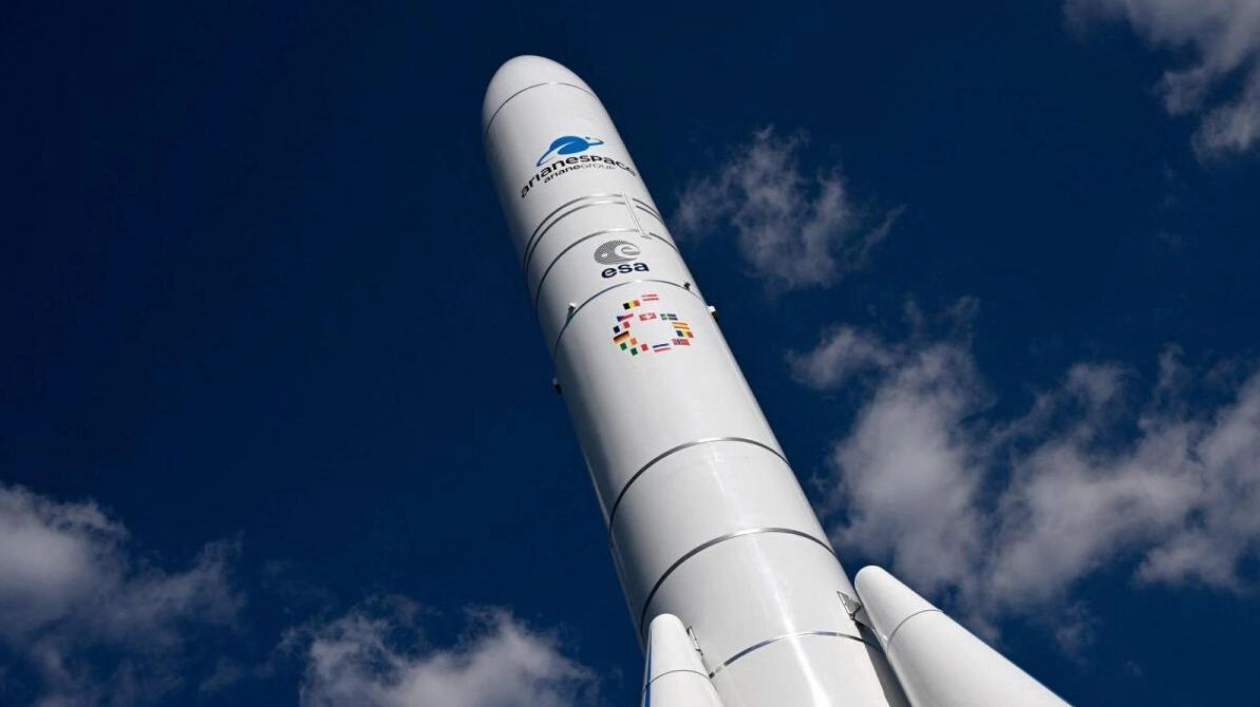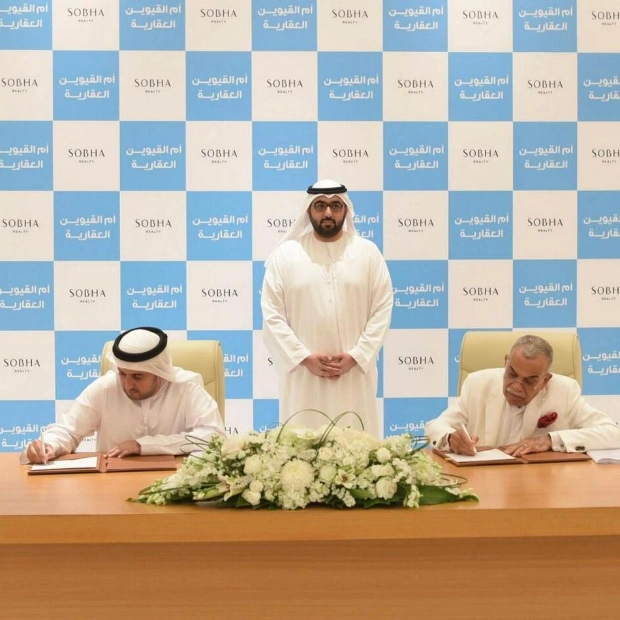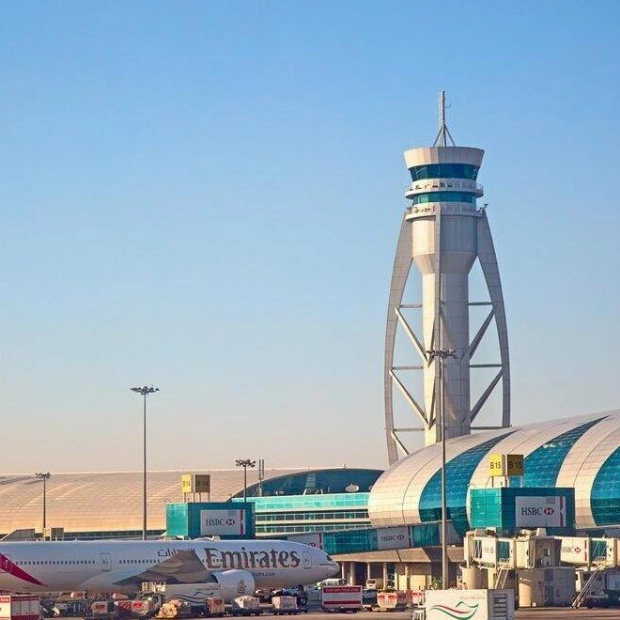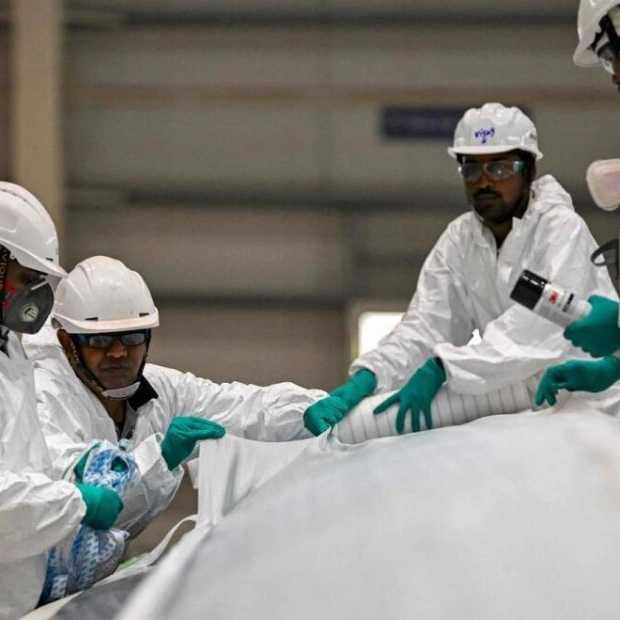Next week, Europe's new Ariane 6 rocket is scheduled for its inaugural launch, symbolizing the continent's aspirations to regain autonomous access to space and counter the intense competition from Elon Musk's SpaceX. After enduring four years of setbacks, the European Space Agency's (ESA) most potent rocket is slated to lift off from Europe's spaceport in Kourou, French Guiana, at 3pm on July 9.
Since the final flight of its predecessor, Ariane 5, last year, Europe has lacked the capability to launch satellites or conduct space missions without relying on competitors like the US-based SpaceX. Kourou previously hosted launches by Russia's Soyuz rockets for over a decade until Moscow withdrew them following the invasion of Ukraine in 2022. Subsequently, Europe's Vega-C light launcher faced grounding due to a launch failure, exacerbating the delays to Ariane 6's maiden flight, originally planned for 2020.
ESA chief Josef Aschbacher remarked, "Everything that could go wrong went wrong," emphasizing the critical importance of Ariane 6 for Europe. "It's absolutely mandatory for Europe to have an independent access to space," he added. The 4.5-billion-euro ($4.8 billion) program has faced numerous challenges, causing European space industry stakeholders to anxiously monitor the preparations leading up to the launch.
A "wet dress rehearsal" conducted late last month successfully simulated all launch procedures, culminating just before the engines were to ignite on the launchpad. ESA space transportation acting director Toni Tolker-Nielsen described the rehearsal as "very smoothly... like a Swiss watch," indicating no issues that could jeopardize the launch date. Ariane 6 is designed to deploy satellites into geostationary orbit, matching Earth's speed at 36,000 kilometers above the planet, and can also launch constellations at lower altitudes.
The rocket's upper stage, equipped with the Vinci engine, activates post-takeoff to position satellites in orbit before descending into the Pacific Ocean, a feature designed to minimize space debris. Initially, Ariane 6 will launch with two boosters, transitioning to a more robust four-booster configuration mid-next year. Unlike SpaceX's reusable Falcon 9, the Ariane 6's boosters and other components are not designed for reuse.
Elon Musk has frequently criticized Ariane 6's non-reusability, but European officials argue that reusability would be economically impractical given the rocket's intended lower launch frequency compared to the Falcon 9. The Ariane 6 is projected to conduct nine launches annually initially, significantly fewer than the Falcon 9's 14 launches in May alone. The inaugural flight will transport 18 smaller items, including university micro-satellites and scientific experiments, with the first commercial mission slated for later in 2024.
Despite the booming space business, with the space economy expected to grow from $508 billion last year to $822 billion by 2032, Ariane 6's profitability remains uncertain. Funding for the first 15 launches is secured, but ESA's member states have agreed to subsidize the rocket up to 340 million euros annually for flights 16 through 42, in exchange for an 11 percent discount. Ariane 6 has already secured 30 mission orders, including 18 for Amazon's Kuiper constellation of internet satellites.
However, just days before its maiden flight, Europe's weather satellite operator EUMETSAT opted to use SpaceX's Falcon 9 instead of the European Ariane 6, citing "exceptional circumstances." This decision was met with disappointment by Philippe Baptiste, head of France's CNES space agency. In the face of such fierce competition, ArianeGroup CEO Martin Sion highlighted the challenge for Ariane 6 to thrive in a market demanding reliable rockets, noting that Ariane 6 is "Europe's sovereignty launcher."






